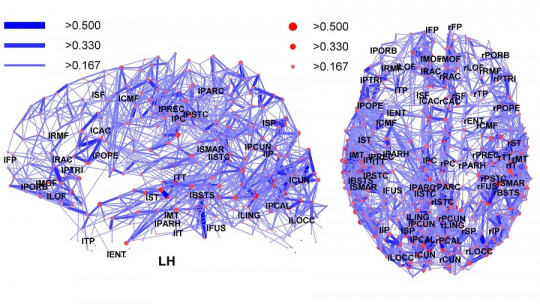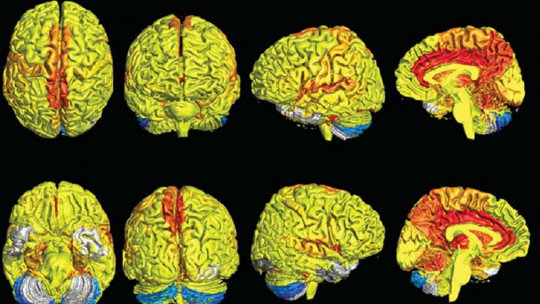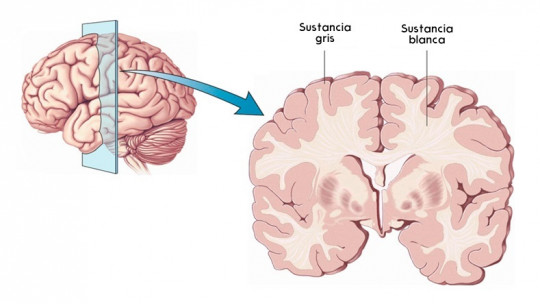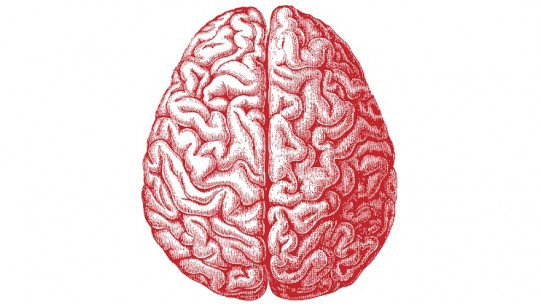
The brain is a very complex organ, since it stores (in just under 1500 grams of tissue) everything we feel and think, what we desire and believe about the world around us and ourselves. That is why it has always generated enormous fascination, and that we get to know it a little better every day.
Traditionally, men and women have been assigned different ways of acting and feeling which although they could respond to discrepancies in social conditioning, have been the incentive to explore possible dimorphisms in the structure and function of their brains.
The research that has been carried out over the years has not been free of controversy, since it is full of confusing and contradictory findings. So much so, that even today it is difficult to assume that any of them can be the subject of global consensus; or considered as a substantial explanatory factor for the cognitive-affective, attitudinal and behavioral differences between the sexes.
However, in this article we will explore the results that have certain evidence in this area of scientific knowledge, without forgetting that each of them continues to be studied for a future adjustment of their plausibility and scope. Let us now delve into the differences between the brain of men and women through this summary of the most important findings.
Differences between the brain of men and women
When comparing the brain of both sexes, one of the details that stands out is that that of men is noticeably larger and heavier than that of women On average, its volume is 1260 cubic cm, while theirs reaches about 1130. It is estimated that the male brain is 10% larger, and that it has a weight between 10%-12% higher. This fact is due to the fact that the body size of one and the other is also different, to the point that controlling such a variable results in a proportional equation of the absolute difference between brains (which is not linked to intelligence or any other function). cognitive).
If we observe the gray matter and white matter in subjects of both sexes (total number of nerve cells and synaptic connections respectively), it becomes visible that men have up to 6.5% more neurons and women have 10%. more “networks” (as well as greater neuronal compaction in certain areas). This data indicates a notable dimorphism attributable to sex, with greater clarity in specific regions of the brain parenchyma (as will be detailed in subsequent chapters).
An interesting nuance is that the “adjustment” of the two brains according to body weight precipitates a reversal of this effect, in such a way that men would start to harbor more synaptic connections and women more concentration and number of neurons. Recent studies in this regard are beginning to question the fact (traditionally accepted) that either sex has a greater amount of such cells or their connections, which is why it is uncorroborated data.
Naked observation of the brain shows a higher density corpus callosum among women Such a structure is composed of a bundle of nerve fibers that has the function of uniting the hemispheres, facilitating mutual interaction and collaboration. This area, located in the very depths of the organ, is essential in multiple daily tasks for which “integrated” information processing would be required.
For this reason, it has been established as a finding through which to support a supposed greater laterality in men (understood as the control of each half of the body by the opposite side of the brain and the specialization of the hemispheres), despite being a fact that does not enjoy complete agreement. There are also studies that associate the same connectivity with a greater ability to contact emotions and with a certain susceptibility to suffering from depression (more common in women).
Observing both hemispheres precisely, slight differences can be seen in the left (larger in men) and the right (which is equal to its opposite in the case of women) which has offered empirical support to the traditional idea of dissonances between the sexes in dimensions such as language or spatial processing.
Precisely in relation to verbal ability, it has been found a difference for the volume and size of the planum temporale (11% larger in women), a structure posterior to the auditory cortex involved in the neurological development of cognitive functions related to the use and learning of a language. The greater asymmetry in men accounts for his tendency towards hemispheric specialization, in contrast to the “holism” typical of women (more distributed cognitive functions).
Regarding the gyri and fissures (the folds that the brain shows on the outside), it has been proven that the anterior commissure is 12% larger in women. It is believed that it serves to connect the temporal lobes of the hemispheres across the midline, facilitating their interaction in those people who were born without a corpus callosum (agenesis). Likewise, we know that the postcentral gyrus is 10% more pronounced among women, which would be associated with the central processing of vibration and fine motor functions.
Regarding the cerebral lobes, there is evidence of the accentuated presence of neurons in the temporal neocortex of men, although the data is reversed in the posterior region, where women have a greater number of neurons on average (recognition of spoken language and perception of faces). Besides, the inferior parietal lobe is thicker in men (especially in the left hemisphere), and is related to spatial/mathematical order skills (connection between the parts of an object, three-dimensional rotation, perception of speed and tempo or estimation of distances).
Finally, some structures of the frontal lobe, such as the orbitofrontal cortex or others, are thicker among women (which participates in the development of higher cognitive functions and in the central inhibition of impulsive acts).
Specific structures and function
Hereafter We will see which are the specific regions for which some differences between men and women are recognized These are generally subtle divergences, which are estimated on average, without considering that the neuroplastic processes of human beings are subject to their experience and the circumstances of the environment in which they carry out their daily lives. This is why each individual brain can be very different from the standard of the organic sex to which it belongs, and that much of what is described here could be due to cultural or educational causes.
On the other hand, there are hypotheses that attribute to testosterone a fundamental role for intersexual divergence at the brain level, so it would be a key influence in structuring the organ (which would begin during pregnancy). It is understood, therefore, that The findings to be described imply a clear confluence of the biological and the social ; despite the fact that the way in which one and the other contribute to the equation is not yet known with complete accuracy. We proceed to delve, in greater depth, into the differences between the brain of men and women at a molecular level.
1. Hypothalamus
The hypothalamus is a brain structure whose function is essential for life; well It participates significantly in the regulation of processes such as temperature, hunger, thirst or circadian rhythms It coordinates closely with the pituitary gland to orchestrate all of the body’s metabolic regulation through multiple “axes” (gonadal, adrenal, thyroid, etc.).
The available evidence indicates that some of its regions, such as the interstitial nucleus, are larger in men. This is reproduced for the medial preoptic area, the brain area most closely associated with pairing and reproduction. In these cases it is estimated that men double the gross volumes of women.
The hypothalamic suprachiasmatic nucleus (which regulates circadian and reproductive rhythms) reaches a similar size in both sexes, although it adopts different shapes for each case (rounded in men and oval in women). It is likely that the latter connects differently with brain areas that are distant, which could explain certain differences attributable to sex such as the greater sensitivity in women to the light variation that occurs with seasonal change.
2. Amygdala
The amygdala is a limbic region related to emotional processing and memory Studies on this structure indicate that men are up to 10% larger in size than women, and that it is also linked to different areas for each of the sexes (visual cortex/striate in men and insula/hypothalamus in females).
Such findings indicate greater emotional reactivity in men to environmental stimuli, and in women to aspects of their own corporality. Some research suggests that any morphological change in this structure depends on the levels of steroids in circulation.
On the other hand, it has been observed that when evoking emotional memories, men show intense activation of the right amygdala and women show intense activation of the left. This nuance has been associated with a differential processing of such information, in which men would emphasize generality and women would focus on details. Finally, it is known that the ratio of the proportional magnitudes of the amygdala and the orbitofrontal cortex is greater in women which makes it possible to control impulses more efficiently (as well as plan and use emotion-oriented coping strategies).
3. Hippocampus
The hippocampus is an essential structure for memory consolidation in long-term storage (generate a new memory) as well as for the interaction between emotions and perceptions. The original studies on this issue indicated that women had a greater volume of cells in these bilateral structures, which would explain that they could more efficiently integrate declarative memories with emotional life (adding emotional nuances to what was experienced). However, recent work (in which global brain size has been controlled) does not show differences between sexes, making the conclusion currently more acceptable to the scientific community.
The difference in spatial orientation between the sexes (emphasis on details such as spatial “markers” in women or articulation of a schematic mapping in men) has been classically associated with discrepancies in this structure, although the parietal lobe would also contribute in some way. . There is much evidence that training in spatial vision has extensive resonances on hippocampal neurons, thereby increasing the volume of these regions.
4. Cerebellum
The cerebellum is an essential structure for maintaining posture, balance and level of consciousness. Research carried out to compare the sexes projects disparate information, but almost always points to a larger volume in the case of men (approximately 9% ).
This phenomenon is associated with superior motor control in the case of men, and more specifically for what is usually known as gross motor skills (playing group sports or running, to which their more developed muscle mass also contributes). It would facilitate an adjusted “perception” of the position of one’s own body in space.
5. Ventricles
Our brains have inside four large empty/interconnected spaces, called ventricles The cerebrospinal fluid circulates through them, which allows proper hydration and nutrition of the nervous tissues, as well as their protection in case of impacts. Such vaults tend to be larger in volume in males, which is consistent considering the fact that their brains (in general) are also larger. These structures may see their size increased in some psychopathologies (such as schizophrenia or bipolar disorder type I or II), which is associated with greater cognitive impairment.
Other information to take into account
As previously indicated, the male brain has more asymmetries than that of the female, which means that its two hemispheres present more pronounced differences between each other than in the case of the latter. Beyond this, very recent research indicates that Men are also more different from each other (in terms of organ structure) than women, which means that there is greater variability among them This fact could correspond to the organizing contribution of prenatal steroids, which elicit differentiation in such a phase of development (masculinizing a brain that is initially feminine for everyone).
What we know about the brain helps us understand why there are differences between men and women in issues such as emotional processing, spatial vision or language. However, it is essential to keep in mind that every individual has the power to shape their brain through experience and habit, regardless of whether they are a man or a woman.








